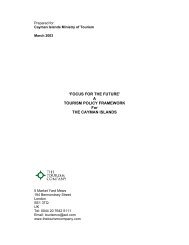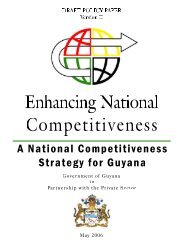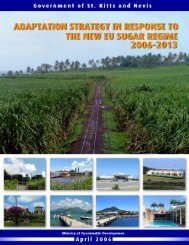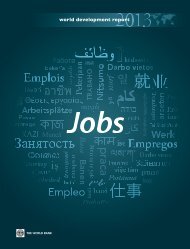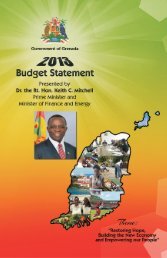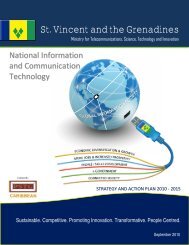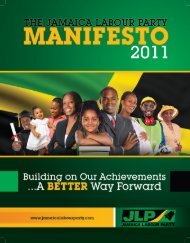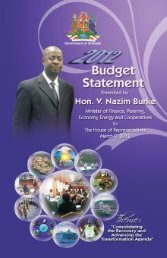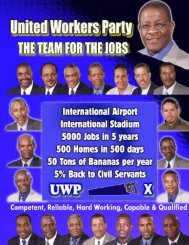Business Removing
Doing Business in 2005 -- Removing Obstacles to Growth
Doing Business in 2005 -- Removing Obstacles to Growth
- No tags were found...
Create successful ePaper yourself
Turn your PDF publications into a flip-book with our unique Google optimized e-Paper software.
72 DOING BUSINESS IN 2005<br />
Provide specialized expertise<br />
Whether in Burundi, Bulgaria or Belgium, the judiciary<br />
can be organized to provide specialization for the judges<br />
who deal with foreclosure or bankruptcy cases. This has<br />
large benefits in increasing recovery rates (figure 9.5). In<br />
poor countries, specialization can be achieved by establishing<br />
a specialized commercial section in the general<br />
court. Its clerks and judges deal only with bankruptcy<br />
and debt recovery issues and not with divorce or criminal<br />
cases. Ghana has done this, as has Bosnia and Herzegovina<br />
more recently.<br />
Where the flow of contract enforcement and bankruptcy<br />
cases is larger, specialized commercial courts<br />
or bankruptcy authorities can be considered. Colombia,<br />
Ecuador, India, Latvia, Moldova, Peru and Tanzania have<br />
implemented such reforms in the last few years. Countries<br />
with a high volume of cases can establish specialized<br />
bankruptcy courts, as in Japan and the United States. The<br />
volume of cases and the complexity of the legal matters<br />
ensures that only experienced judges, at advanced stages<br />
in their careers, are selected for these courts.<br />
Countries can also build specialized expertise by<br />
mandating that judges have business experience. Bankruptcy<br />
judges in most rich countries have such experience,<br />
acquired by running their own firms as in France,<br />
by being legal counsel in corporations or private law<br />
firms, as in the United States, or by going through a business<br />
training program, as in Germany. With few exceptions,<br />
like Peru, judges in developing countries have no<br />
business experience and typically no training in business<br />
and accounting matters either. This needs change because<br />
countries that value business experience of judges<br />
have 10% higher recovery rates.<br />
Beyond training and requirements for business experience,<br />
scarce expertise can be pooled by allowing legal<br />
entities and not only physical persons to administer the<br />
bankruptcy estate. The Czech Republic did this in 2000<br />
with great success. But many countries don’t permit it.<br />
Limit appeals<br />
Appeals are needed to resolve legitimate disputes. But<br />
too often they are abused—invoked for frivolous reasons<br />
and delaying an efficient outcome. Limiting appeals,<br />
both at the outset and during the procedure, increases<br />
recovery rates (figure 9.6). In foreclosure proceedings,<br />
the creditor in Australia, New Zealand or the United<br />
Kingdom need only prove that a payment is overdue.<br />
Appeal is not possible. In contrast, in El Salvador the<br />
debtor can appeal foreclosure and delay its start by up to<br />
16 months. In Angola, Haiti, and Honduras the appeals<br />
last so long—often years—that employees or the tax authority<br />
can initiate bankruptcy and stop the foreclosure<br />
process altogether. Secured creditors get next to nothing.<br />
As a result, banks are only willing to lend to businesses<br />
whose owners put up personal assets as collateral. Few<br />
can afford such terms.<br />
Appeals delay liquidation or reorganization proceedings<br />
even more. In Bolivia, appeals take a year. In Chile<br />
and Bosnia and Herzegovina, appeals last several years.<br />
What to do? Cut the period of appeals. Romania just<br />
did so, reducing each appeal from 30 to 10 days. Or limit<br />
appeals only to those on legal grounds, not on the case<br />
facts, which are already established and accepted by the<br />
judge at the start of the case. Or allow the case to continue<br />
during appeal, as in Estonia. This avoids disruption<br />
while providing for disputes to be resolved. Allowing the<br />
FIGURE 9.5<br />
Specialization pays off on all dimensions<br />
Time, cost, recovery<br />
and survival rate in insolvency<br />
50<br />
FIGURE 9.6<br />
Limiting appeals increases recovery rates<br />
Percentage increase in recovery rate<br />
32%<br />
48<br />
Case<br />
continues<br />
25%<br />
General<br />
Court 3.4<br />
Specialized<br />
court<br />
2.6<br />
16<br />
10<br />
29<br />
20<br />
17%<br />
Time<br />
(years)<br />
Cost<br />
(percentage<br />
of estate)<br />
Recovery<br />
rate<br />
(cents per dollar)<br />
Probability<br />
of survival<br />
(percent)<br />
Case is<br />
delayed<br />
Order initiating<br />
insolvency<br />
appealed<br />
Liquidation<br />
appealed<br />
Claim amount<br />
disputed<br />
Source: Doing <strong>Business</strong> database.<br />
Source: Doing <strong>Business</strong> database.



